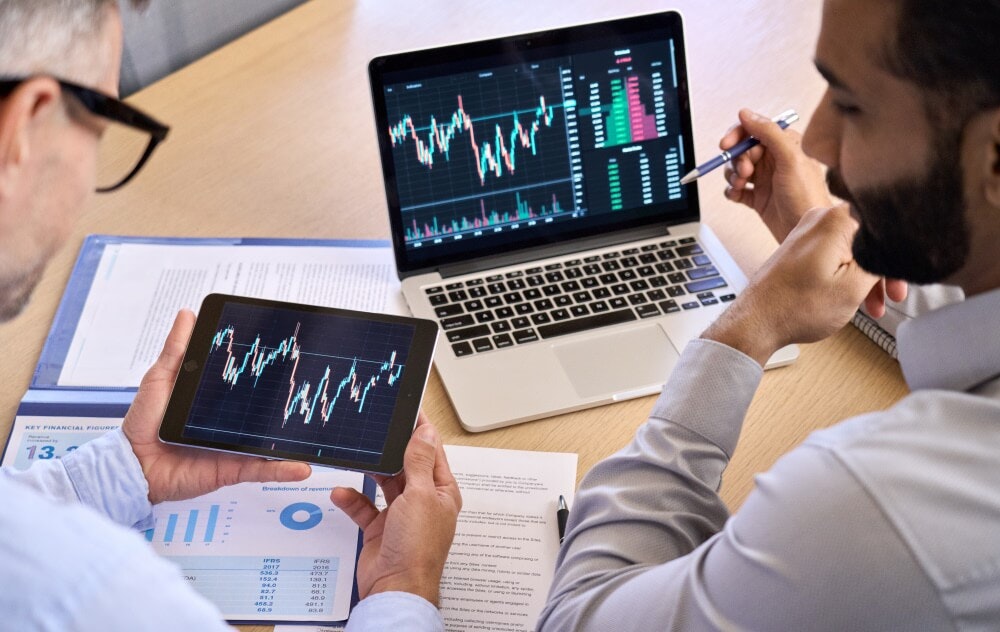Nick Goold
Reviewing your forex trading performance is essential for improving your trading skills and achieving your goals. Ideally, your should review your trading at the end of each trading day and on the weekend. However, initially reviewing your trades can be challenging, but your chance of making long-term profits will significantly improve. Here are some steps you can follow to evaluate your forex trading performance:
Step 1: Set goals
Before reviewing your performance, you must set clear and achievable short-term and long-term goals. These goals will help you establish benchmarks to measure your performance and track your progress. All traders will have monetary goals, which are usually unrealistic and could be difficult to achieve. Ensure you set more easily achievable goals to stay motivated and not gamble trying to reach your goals.
Apart from monetary goals, setting unrelated to your account balance can help you follow good trading practices. For example, your goal could be to follow your stop loss every day for the coming week. Another goal could be achieving a higher average profit than loss over your following ten trades. Non-monetary goals can be easier to achieve and increase the likelihood of achieving your monetary goals.
Step 2: Keep accurate records
Keep detailed records of all your trades, including entry and exit points, stop-loss levels, position size, and profit/loss. Recording your trades in a journal can help you analyze your trading decisions, emotions, and results. Saving your trading charts and recording your entry and exit point can help you quickly find ways to improve your strategy. In addition, a spreadsheet will help you analyze your trading and produce statistics on win ratio, risk-reward, and which markets and times of the day are most profitable. Keeping records on every trade will help you identify your strengths and weaknesses and provide a clear picture of your trading style.
Step 3: Analyze your trading strategy
Review your trading strategy, and identify the reasons behind your successful trades and the factors that led to losses. Analyzing your entry and exit points on a chart can help you find ways to change your strategy. This will help you understand what works and what doesn't in your trading approach. Once you have a record of your trades, you can analyze them to identify patterns and trends. For instance, are you following your trading plan strictly or entering too late? Could a different indicator lead to better results?

Step 4: Analyze your risk management
Evaluate how well you manage your risk, including stop-loss, take-profit, and position sizing. Analyze your previous trades and compare performance with different risk management settings. For example, would your performance improve with a smaller stop loss or worsen? You can find ways to improve by reviewing your trades and using data.
Poor position sizing can lead to losses. If you usually change your position size, check whether it helped your performance and test different position sizing strategies. For example, would increasing your position size after a winning day and decreasing it after a winning day improve your performance?
Step 5: Analyze your emotions
Emotions are crucial in forex trading, and keeping them in check is essential. Analyze how your emotions affect your trading performance and find ways to manage them better. Recording your emotions in a trade journal will help you understand how your emotions could negatively impact your trading.
Step 6: Seek feedback
Getting feedback from experienced traders or a trading community can help you identify blind spots and provide new insights into your trading approach. A good mentor should look to improve your trading strategy rather than get them to copy their strategy.

Step 7: Adjust your trading plan
Based on your performance analysis, adjust your trading plan and strategy accordingly. Keep what works and discard what doesn't. Be realistic about what you can achieve and take steps to improve your weaknesses.
Reviewing your trading is vital for traders of all levels. Following these steps, you can thoroughly review your forex trading performance and make data-driven decisions to improve your results.

